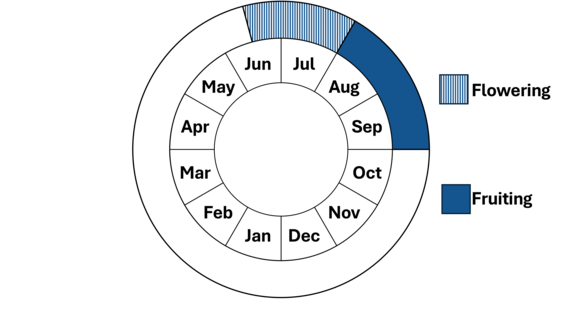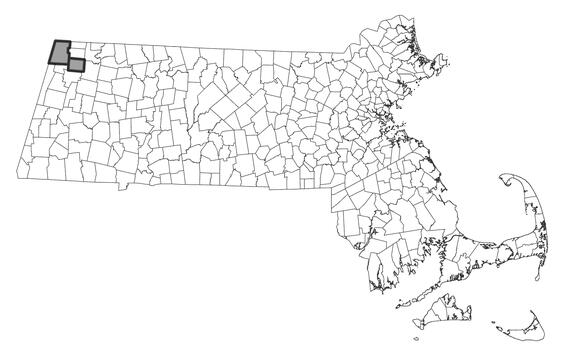- Scientific name: Luzula parviflora
- Species of Greatest Conservation Need (MA State Wildlife Action Plan)
- Endangered (MA Endangered Species Act)
Description

Photo by Bryan Connolly.
Black-fruited woodrush is a perennial herb, 15-36 inches (0.4 m) tall. It has one to several flowering stems arising from a basal tussock of leaves. Basal leaves are flat, glabrous (smooth) or nearly so, pale green, and about 0.5 in (1.3 cm) wide. Stem leaves are much smaller. Terminal brownish flower clusters occur on curved-spreading, drooping branches. Fruits are dark brown and less than 0.13 in (0.32 cm) long. Flowering season is mid-June through July; fruiting occurs from July through September.
Woodrushes look superficially like grasses and sedges. Like grasses, woodrushes have stems rounded in cross-section; most sedges are triangular. Unlike either family, woodrushes clearly have flower parts in 3s–3 sepals and 3 petals which all look alike, and 3 or 6 stamens. The only other woodrush in Massachusetts which resembles L. parviflora is sylvan woodrush, L. acuminata, of rich mesic forests. It is smaller than L. parviflora (only 4-15 inches; 10-40 cm tall) with longer flowers and fruits (3.3–6.4 mm; 0.13-0.25 in) and simple unbranched flower stalks.
Life cycle and behavior
Black-fruited woodrush is a perennial herb.

Population status
Black-fruited woodrush is listed as endangered in Massachusetts. The Massachusetts Natural Heritage & Endangered Species Program has 1 record from Berkshire County. It has been observed within the last 25 years. Reasons for this species’ rarity include scarcity of suitable habitat and its occurrence here at the southeast edge of its range.

Distribution in Massachusetts
1999-2024
Based on records in the Natural Heritage Database
Distribution and abundance
Black-fruit woodrush is circumpolar; our subspecies ranges from Labrador to Alaska, south to the mountains of New England, New York, northern Michigan, Wyoming, and California.
Habitat
Black-fruited woodrush is found only at high elevations in this state. Growing in scattered colonies containing a few individuals, Luzula parviflora inhabits roadsides, trail sides, and natural openings in boreal forests. In other states, it favors cold, mossy banks, dry, open, montane woods, and alpine clearings.
Healthy habitats are vital for supporting native wildlife and plants. Explore habitats and learn about conservation and restoration in Massachusetts.
Contact
| Date published: | May 6, 2025 |
|---|